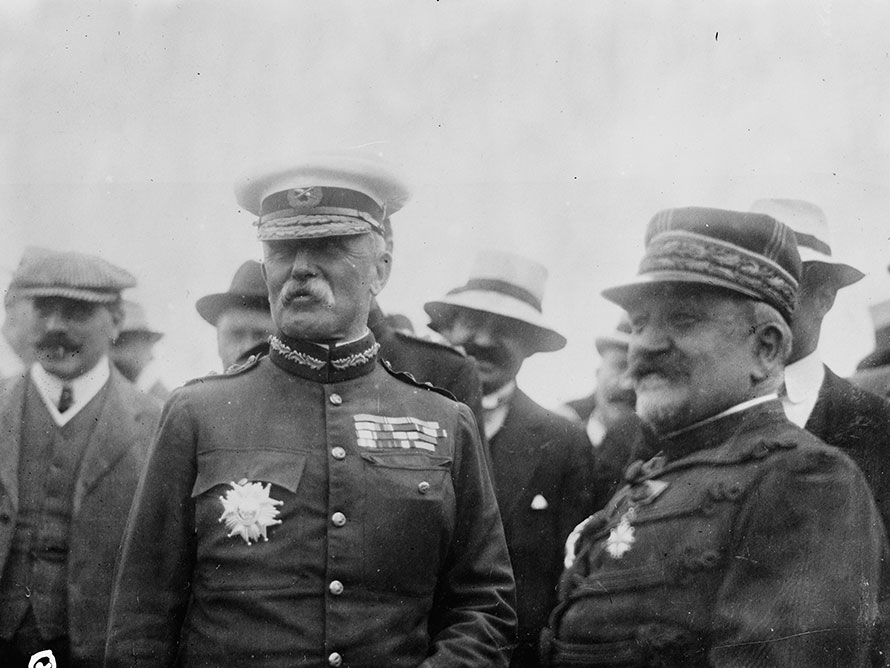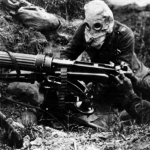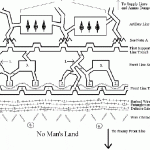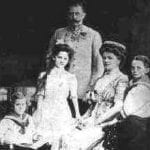From 1914-1918, the leaders of World War One were generals who commanded millions of men, emperors who inherited dynasties with centuries of accumulated wealth, and Sultans who claimed a direct line of connection to the Prophet Muhammed. After the war, many of them lost all their money and power, and were forced into lonely exile. British Chief of Staff Henry Wilson left the army after the war and became a Member of Parliament. He was murdered on his doorstep by the Irish Republican Army in 1922. Kaiser Wilhelm II went into exile in the Netherlands and died in 1941 at the age of 82. When he died he was putting pins in a map to mark the progress of the German army. Enver Pasha fled to Germany after the war. Then he fled to Moscow and then Turkmenistan, where he took command of anti-Soviet rebels and was killed in the fighting in 1922.
-
Allies
-
David Lloyd George lost his position as Prime Minister in 1922. He remained active in politics until his death in 1945 at the age of 82.
-
Winston Churchill, the architect of Gallipoli, became Prime Minister in 1940 and helped lead Britain to victory over the Nazis.
-
Sir John French served as Lord Lieutenant of Ireland until his retirement from the army in 1921. He was given the honorary title of Lord of Ypres in 1922. He died of cancer in 1925 at the age of 72.
-
Sir Douglas Haig was given 100,000 pounds by Parliament after the war. But, he never became Chief of Staff of the British Army. He worked raising money for veterans until he died in 1928 at the age of 67.
-
British Chief of Staff Henry Wilson left the army after the war and became a Member of Parliament. He was murdered on his doorstep by the Irish Republican Army in 1922. He was 58.
-
George Clemenceau ran for president after the war but lost. He resigned as PM and spent the rest of his life traveling the world. He died in 1929 at the age of 88.
-
Joseph Joffre withdrew from public life after the war. He died in 1931 at the age of 79.
-
Philippe Petain was named Marshall of France and eventually went into politics. In 1940, he was asked to form a government. After Nazi Germany conquered France, Petain became head of the puppet state of Vichy France. After WW2, he was tried and sentenced to death, but the sentence was commuted to life in prison. He died in 1951 at the age of 95.
-
Ferdinand Foch was also named Marshall of France but withdrew from public life. He died in 1929 at the age of 77.
-
Woodrow Wilson suffered a debilitating stroke on October 2, 1919 and was incapacitated (first completely, then partly) throughout the rest of his presidency. He left the White House after the end of his second term (in 1921) and died in 1924 at the age of 67. He is the only president buried in Washington, DC.
-
John J. Pershing became Chief of Staff of the U. S. Army after the war. He later wrote his memoirs, which won the Pulitzer Prize for history in 1932.
-
After the war, Alvin York worked to promote education in Tennessee and served as a supervisor in the Civilian Conservation Corps. He tried to reenlist in the Army when WW2 broke out, but he was turned down due to his age and poor health. He was commissioned a major in the Army Signal Corps. He was immortalized in the 1941 film Sergeant York, starring Gary Cooper as York. He died in 1964 at the age of 76.
-
-
Central Powers
-
Emperor Karl I went into exile and died of tuberculosis in 1922 at the age of just 35.
-
Conrad von Hotzendorff went to live in Germany after the war and wrote his memoirs. He died in 1925 at the age of 73.
-
Kaiser Wilhelm II went into exile in the Netherlands and died in 1941 at the age of 82. When he died he was putting pins in a map to mark the progress of the German army (G. J. Meyer)
-
Paul von Hindenburg came out of retirement to run for president in 1925. He won, defeating Ludendorff. In 1932, at the age of 85, he was elected president again (defeating Hitler). The next year, he appointed Adolf Hitler as chancellor. He died in 1934 at the age of 87.
-
Erich Ludendorff returned to Germany from exile in Sweden. He later became involved in two coup attempts, including the Beer Hall Putsch with Adolf Hitler in 1923. He ran unsuccessfully for German president in 1925. He died in 1937 at the age of 72.
-
Helmut von Moltke’s health declined after he was removed as Chief of Staff. He died in 1916 at the age of 68.
-
Erich von Falkenhayn withdrew from public life after the war. He died in 1922 at the age of 61.
-
Mustafa Kemal became a war hero a second time in the Greco-Turkish War, after which he became the first President of Turkey. He was given the honorary title “Ataturk” (“Father of the Turks”). He died in 1938 at the age of 57.
-
Enver Pasha fled to Germany after the war. Then he fled to Moscow and then Turkmenistan, where he took command of anti-Soviet rebels and was killed in the fighting in 1922. He was 41.
-
-
Russians / Soviets
-
Aleksei Brusilov joined the Red Army after the Russian Revolution until he retired in 1924. He died two years later at the age of 72,
-
Alexander Kerensky lived in exile the rest of his life, in Paris and New York. He taught at Stanford University. He lived until 1970, when he died at the age of 89.
-
Vladimir Lenin suffered a cerebral hemorrhage and died in 1924 at the age of 54.
-
Leon Trotsky lost a power struggle with Josef Stalin after the war and was forced into exile in 1929. From then on, he was constantly pursued by Stalin’s agents, who finally murdered him in Mexico in 1940. He was 60.
-
Cite This Article
"The Fate of World War One’s Generals and Emperors" History on the Net© 2000-2024, Salem Media.
April 25, 2024 <https://www.historyonthenet.com/the-fate-of-world-war-ones-generals-and-emperors>
More Citation Information.









